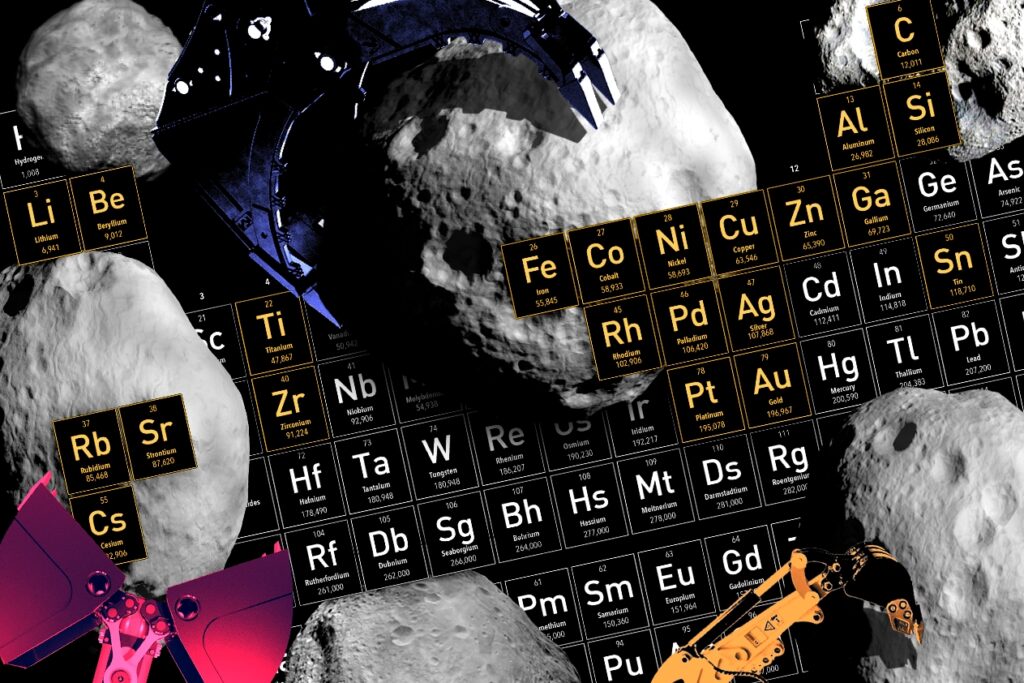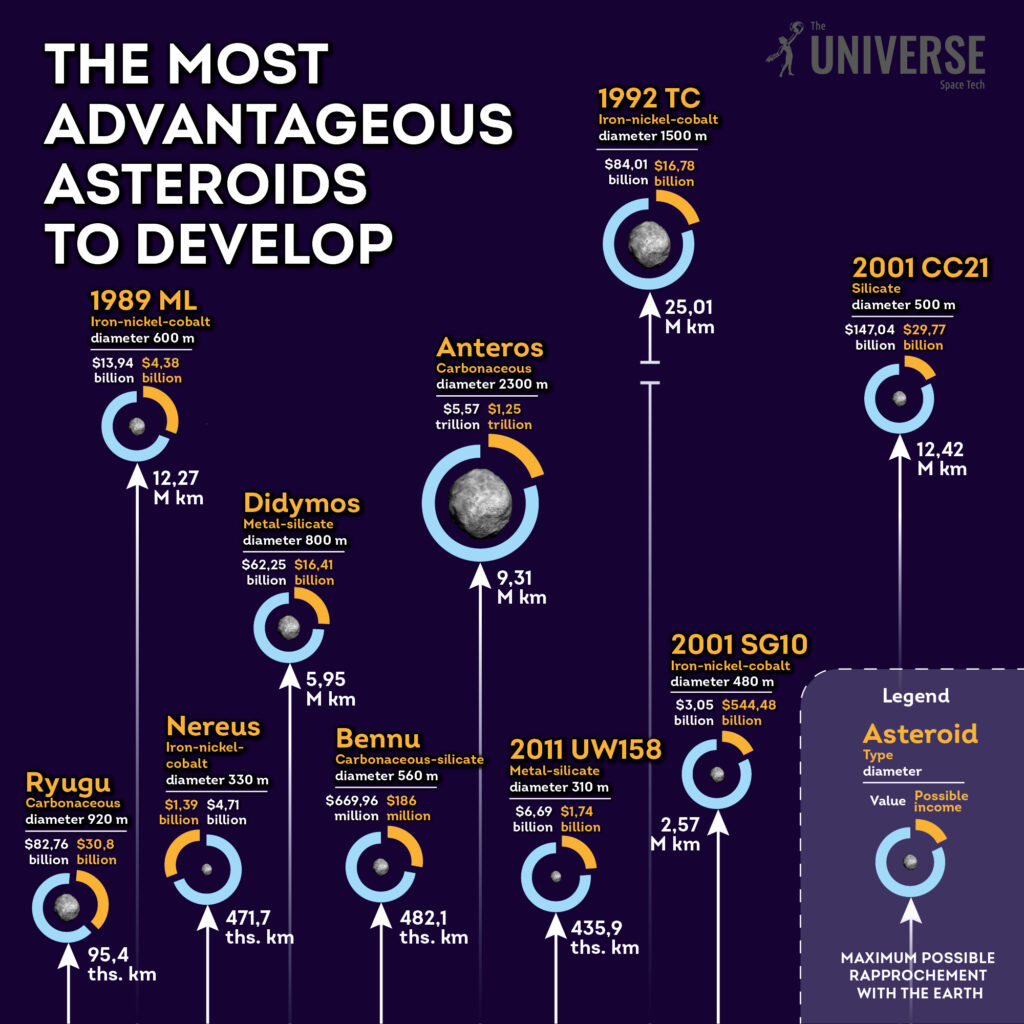Thanks to the efforts of journalists and scientists, most people tend to fear asteroids. After all, one of them could collide with Earth and cause the extinction of humans, just as it caused the disappearance of dinosaurs.
However, braver and more enlightened individuals have long realized that asteroids are primarily a wonderful source of various resources. Some even dream of extracting these resources and becoming the richest person in the Solar System as a result. But a huge number of myths have already emerged, most of which have little to do with reality. So let’s explore the real treasures that can be found on asteroids.

1. More valuable than platinum
When people talk about the valuables that can be found on asteroids, they usually imagine gold. Indeed, gold does exists on “space rocks.” However, experts more often mention platinum, which is more valuable and has a more confident presence on celestial bodies. For example, in 2015, asteroid 2011 UW158 passed by Earth, containing platinum worth 5.4 billion dollars.
However, there are even more valuable metals within asteroids. One such metal is rhodium, another member of the platinum group, which is 6.5 times more expensive than platinum.
2. Making money from materials for spacecraft?
In the modern world, the value of certain materials is primarily determined by what can be made from them. Therefore, the possibility of mining aluminum, iron, nickel, and cobalt from asteroids should not be underestimated. Unlike platinum and rhodium, their presence in “celestial stones” is not just possible; we know for sure that they are present in significant quantities.
Nickel and cobalt, when combined with iron, are typically used to obtain alloys that are highly resistant to high temperatures and mechanical stresses. That’s why they form the basis of any aerospace technology. Magnesium and aluminum, which are also abundant on asteroids, are used for the production of heat-resistant alloys.
3. Why is water so valuable?
In space, true wealth may not only lie in rare metals. Simple water also holds immense value because it is needed by both humans and plants grown for food. Additionally, various technological processes for producing essentials often require large quantities of water.
In space, it is not possible to simply dig a well or tap into a river. In general, water is scarce on most celestial bodies. This is why icy asteroids, which are relatively easy to find in areas of the Solar System farther from the Sun than Earth, can bring great wealth to those who exploit them. The main challenge in this case would be delivering the obtained water to the end users.
4. Who needs carbon?
Another element that is abundant on asteroids but often underestimated is carbon. It exists there in the form of both inorganic and organic compounds. Samples from the Ryugu asteroid, for example, have shown the presence of all 20 essential amino acids, aliphatic amines, carboxylic acids, and aromatic hydrocarbons.
All these substances are abundant on Earth, but they are rarer in space than water. Therefore, they would need to be transported from our planet. The launch cost for every kilogram of cargo into orbit (let alone interplanetary trajectories) is extremely expensive. Additionally, organic compounds are not only needed for growing food; modern plastic production is also based on them.

5. Are silicates really meaningless?
The majority of asteroids consist not only of the substances mentioned above but also of silicates, compounds of the element silicon. These substances are quite similar to granite, basalt, and other types of rocks that we simply call stones on Earth.
However, nothing in space comes cheap. Because it is empty, practically everything has to be brought from Earth. That is why all the substances that can be “found on-site” and utilized are treasures.
Silicate rocks of asteroids will come in handy when it comes to building gigantic space stations. After all, they can be melted down into construction materials and products that would require no rockets for transportation from Earth.

